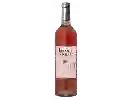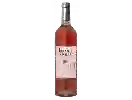
Winery Celliers du ColombierDomaine du Mas Pascaly Costières-de-Nîmes
This wine generally goes well with
Details and technical informations about Winery Celliers du Colombier's Domaine du Mas Pascaly Costières-de-Nîmes.
Discover the grape variety: Sauterne
Intraspecific crossing between Sémillon Blanc and Sauvignon Blanc carried out in 1892 by Numa Naugé. This variety has been multiplied very little and is now in the process of disappearing.
Informations about the Winery Celliers du Colombier
The Winery Celliers du Colombier is one of of the world's great estates. It offers 27 wines for sale in the of Costières-de-Nîmes to come and discover on site or to buy online.
The wine region of Costières-de-Nîmes
The wine region of Costières-de-Nîmes is located in the region of Rhône méridional of Rhone Valley of France. Wineries and vineyards like the Domaine Scamandre or the Château d'Or et de Gueules produce mainly wines red, pink and white. The most planted grape varieties in the region of Costières-de-Nîmes are Mourvèdre, Roussanne and Viognier, they are then used in wines in blends or as a single variety. On the nose of Costières-de-Nîmes often reveals types of flavors of non oak, thyme or raisin and sometimes also flavors of clove, cocoa or coffee.
The wine region of Rhone Valley
The Rhone Valley is a key wine-producing region in Southeastern France. It follows the North-south course of the Rhône for nearly 240 km, from Lyon to the Rhône delta (Bouches-du-Rhône), near the Mediterranean coast. The Length of the valley means that Rhône wines are the product of a wide variety of soil types and mesoclimates. The viticultural areas of the region cover such a distance that there is a widely accepted division between its northern and southern parts.
The word of the wine: Organic (agriculture)
A type of agriculture (and therefore viticulture) based on respect for living organisms and biological cycles, and which excludes the use of synthetic treatment products and synthetic fertilizers. Organic farming is guaranteed by the respect of a set of specifications.













